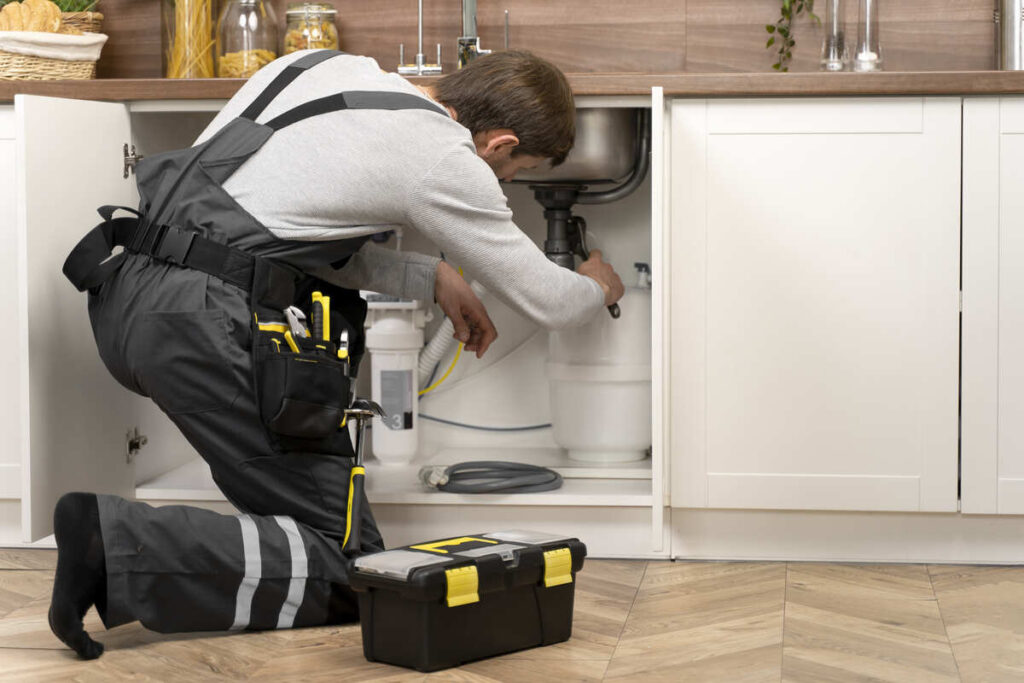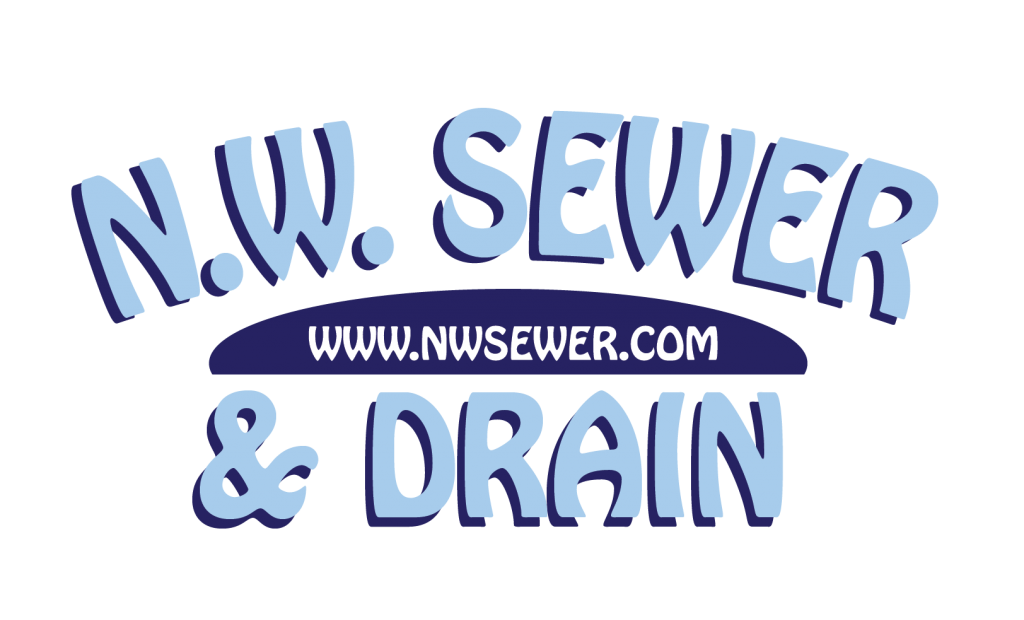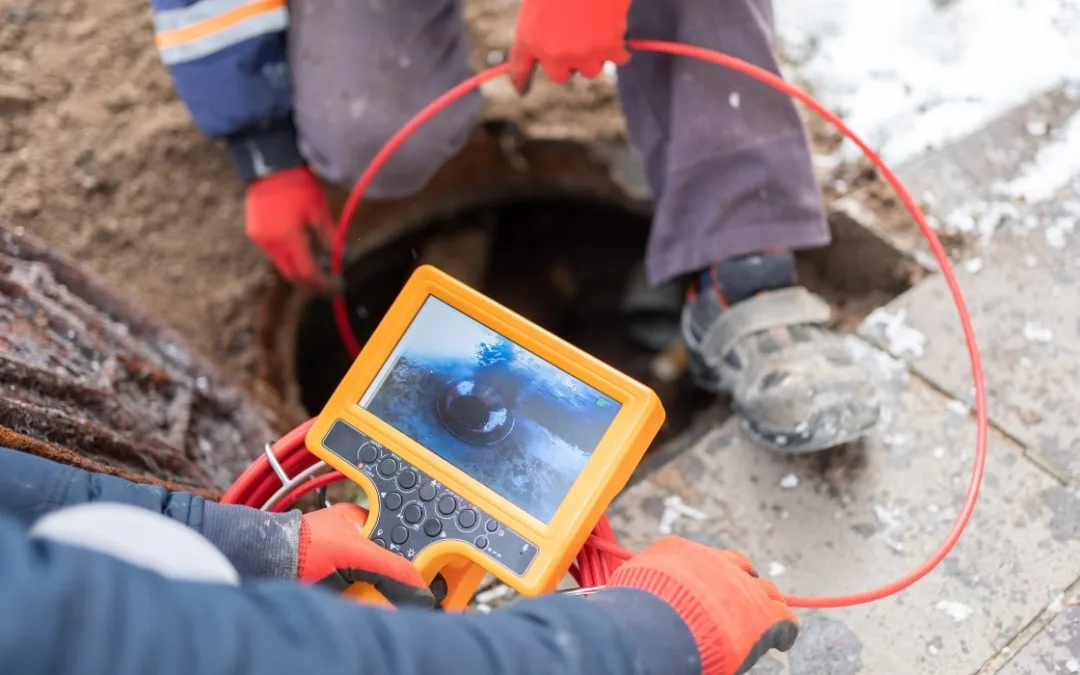Your sewer line is a vital, yet often overlooked, part of your home’s plumbing system. It silently drains away waste, keeping your home clean and sanitary. But neglecting this workhorse means you could face a messy (and expensive) sewage backup.
The good news is that with a proactive approach, you can prevent most sewer line problems. Here’s how to establish a routine maintenance schedule for healthy sewer lines.
Understanding Sewer Lines: What Goes On Down There
Before diving into maintenance, let’s get familiar with sewer lines. They’re typically made of durable materials like cast iron, PVC, or clay, and the main sewer line exits your home and connects to the city sewer system (public sewer) or a septic tank (private sewer). Wastewater from your drains travels through this pipe, eventually reaching a treatment facility or being dispersed into the drain field (septic systems).
Over time, various factors can compromise its smooth operation. These can include issues such as:
- Debris Buildup: Grease, food scraps, hair, and other materials can accumulate and form clogs within the pipes.
- Root Intrusion: Tree roots can sneak into cracks or joints in the sewer line, causing blockages and potential damage.
- Pipe Deterioration: Age, corrosion, and ground movement can weaken pipes, leading to leaks and potential collapses.
Why Regular Drain Cleaning Matters
Think of your sewer line as a highway for wastewater. Over time, debris like grease, food scraps, hair, and even mineral buildup can accumulate, creating blockages that slow down drainage or even cause complete backups. Fortunately, if treated early, drain cleaning can resolve most every buildup and blockage problem.
Regular drain cleaning is akin to preventative maintenance for your sewer lines. It removes these build-ups before they become a major problem, keeping your system flowing freely.
How Often Should You Schedule Drain Cleaning?
The frequency of drain cleaning depends on several factors including the number of occupants in the home. More people using the plumbing system means more potential for clogs. Usage habits are another significant factor. For example, homes with garbage disposals or those prone to greasy dishes may require more frequent cleaning. And a common factor in our area is the intrusion of tree roots. Roots can infiltrate sewer lines, causing severe blockages. If you have mature trees near your sewer line, consider more frequent inspections.
As a general rule, biannual professional drain cleaning is recommended for most homes as an essential part of a sewer line maintenance schedule. This proactive approach helps prevent clogs and keeps your sewer line functioning smoothly.

Here’s how regular drain cleaning benefits your home:
- Prevents Clogs and Backups: A clean sewer line is less susceptible to clogs, which can lead to messy and inconvenient backups. Backups not only disrupt your daily routine but can also cause damage to your property and pose potential health hazards.
- Reduces Foul Odors: Sewer line blockages can trap waste and create unpleasant odors in your drains and even your entire home. Regular cleaning eliminates these odors, keeping your home fresh and healthy.
- Extends the Lifespan of Your Sewer Lines: Clogged and neglected sewer lines are more prone to cracks and leaks. Regular cleaning helps maintain the integrity of your pipes, preventing costly repairs and replacements down the line.
- Saves Money: Investing in preventive maintenance through regular cleaning is significantly cheaper than dealing with emergency repairs caused by clogged sewer lines.
Proactive Practices for Everyday Prevention
In addition to scheduling regular drain cleaning by a professional company like NW Sewer and Drain, here are seven everyday practices you can adopt to promote healthy sewer lines:
- Be mindful of what goes down the drain: Avoid pouring grease, oil, or coffee grounds down the drain. These substances solidify and contribute to clogs.
- Use drain traps: These metal baskets in your sink and tub drains catch debris before it enters the sewer line. Empty and clean them regularly.
- Don’t flush non-flushable items: Paper towels, hygiene products, and other disposable items can cause blockages in your sewer line. Dispose of them properly in the trash.
- Be mindful of trees: When planting trees or shrubs, choose varieties with non-invasive root systems that won’t encroach on your sewer line.
- Treat garbage disposals wisely: Garbage disposals are not meant for everything. Avoid grinding bones, fruit pits, or excessive food scraps.
- Hot water flush: Once a month, pour a pot of hot water down your drains to help melt any grease buildup.
- Treat Clogs Early: If you experience slow drains, don’t ignore them. Try using a plunger or a natural drain cleaner made of baking soda and vinegar. For stubborn clogs, consider professional help before the problem worsens.
The Power of Professional Inspections
While drain cleaning removes existing clogs, it doesn’t identify potential problems within the sewer line itself. For a truly healthy sewer system, homeowners would be wise to schedule professional sewer line inspections every two to three years. These inspections, often performed with a video camera, can reveal:
- Cracks or breaks: Over time, sewer lines can develop cracks due to age, shifting soil, or root intrusion. A professional can assess the damage and recommend repairs.
- Root infiltration: Tree roots are notorious for seeking moisture and can burrow into sewer lines, causing blockages and damage. Early detection is crucial to prevent costly repairs.
- Misaligned pipes: Improperly installed sewer lines can create low spots where waste accumulates, leading to clogs and backups.
The Benefits of a Maintenance Schedule
By establishing a regular maintenance schedule, you’ll enjoy numerous benefits, including:
- Reduced risk of clogs and backups: Preventative cleaning and inspections minimize the chances of a messy and disruptive sewer line clog.
- Early detection of problems: Catching issues early allows for timely repairs, preventing more extensive (and expensive) damage down the line.
- Improved drainage: Clean sewer lines ensure smooth wastewater flow, preventing slow drains and gurgling noises.
- Increased home value: A well-maintained sewer system is a valuable asset when selling your home.
- Peace of mind: Knowing your sewer line is in good condition gives you peace of mind and avoids the stress of unexpected plumbing emergencies.
Crafting Your Personalized Maintenance Schedule
Now that you understand the dynamics of your home’s sewer functioning and potential issues to be aware of, let’s build your customized sewer line maintenance plan! Here’s a breakdown of four key actions and their recommended frequency:
- Drain Cleaning (Every 1-2 Years): Schedule professional drain cleaning with a high-pressure water jetting service every 1-2 years. This removes accumulated debris and prevents future clogs. Frequency may increase depending on factors like household size and usage.
- DIY Drain Maintenance (Monthly): Once a month, pour a pot of boiling water down your drains to loosen any grease buildup. Follow it up with a half cup of baking soda and vinegar solution to further clear any minor clogs.
- Visual Inspections (Every 6 Months): Regularly inspect your property for signs of potential sewer line problems. Look for slow drains, gurgling sounds when flushing toilets, or patches of soft, mushy ground near the sewer line – these can indicate clogs or leaks.
- Professional Inspections (Every 2-3 Years): Consider hiring a licensed plumber for a video camera inspection of your sewer line every 2-3 years. This allows them to identify potential issues like root intrusion, cracks, or misalignment within the pipes.
Partnering with a Professional Sewer and Drain Company
While some sewer line maintenance tasks can be tackled on your own, it’s always wise to have a qualified technician on your side. A professional sewer and drain expert can:
- Perform thorough drain cleaning using specialized equipment to ensure complete removal of debris.
- Conduct video camera inspections to provide a detailed visual assessment of your sewer line’s condition.
- Diagnose and repair complex issues like root intrusion, pipe damage, or leaks.
- Offer personalized maintenance advice based on your specific plumbing system and needs.
And while some drain cleaning tasks can be tackled as DIY projects by homeowners, professional sewer and drain services offer several advantages, such as:
- Expertise: Plumbers have the knowledge and experience to handle complex clogs and identify potential problems with your sewer line.
- Specialized equipment: Professionals use powerful drain cleaning tools and video inspection cameras for thorough cleaning and assessment.
- Safety: Dealing with sewage can be hazardous. Licensed plumbers have the proper training and equipment to protect themselves and your home.
Maintaining a Healthy Home Sewer System
By following these tips and partnering with a qualified plumbing company, you can establish a proactive maintenance schedule for healthy sewer lines. Remember, a few minutes of preventative care today can save you from a major headache (and expense) tomorrow.
Whether you are dealing with a clogged sewer line, a basement drain backing up, or any other plumbing issue, you can count on NW Sewer and Drain to provide exceptional service. We pride ourselves on our professionalism, knowledge, and commitment to customer satisfaction.
Don’t let clogged drains disrupt your daily life. Contact NW Sewer and Drain today for all your sewer line repair and drain cleaning needs. We are here to help you keep your plumbing system running smoothly and efficiently.
Preventative Steps for Long-Term Sewer Health
Know Your Sewer Line’s History
Ever wondered about the condition of your sewer line? If your home is older, your pipes might be made of outdated materials like clay or cast iron, which are prone to cracks and corrosion. Knowing what your sewer line is made of and when it was installed can help you anticipate potential problems. If you’re unsure, a professional inspection can reveal crucial details.
The Role of Soil and Weather
Did you know shifting soil and seasonal weather changes can impact your sewer line? Freezing temperatures can cause the ground to expand, putting pressure on pipes, while droughts can shrink soil, creating gaps where roots sneak in. Being mindful of your region’s climate and taking preemptive measures—like insulating exposed pipes—can save you from costly repairs.
Use Sewer-Safe Additives Wisely
While chemical drain cleaners are tempting for quick fixes, they can damage your pipes over time. Instead, consider enzyme-based cleaners. These eco-friendly products break down organic matter without corroding your sewer line, keeping it in top shape while protecting the environment.
By staying ahead of potential issues and taking these proactive steps, you’ll keep your sewer line running smoothly and avoid unexpected headaches. Small changes today can lead to big savings tomorrow!
FAQ Section for Sewer Line Maintenance
1. What are the signs that your sewer line needs maintenance?
If you notice slow drains, frequent clogs, foul odors, or patches of lush grass over your sewer line, it could be time for maintenance. These symptoms often signal blockages, leaks, or root intrusion in your sewer system. Regular inspections can help catch issues early and prevent costly repairs.
2. How can tree roots damage sewer lines?
Tree roots are naturally attracted to the moisture and nutrients in sewer lines. Over time, they can infiltrate small cracks or joints, causing blockages and structural damage. Installing root barriers or scheduling regular inspections can help prevent root-related issues.
3. What’s the difference between drain cleaning and sewer line cleaning?
Drain cleaning targets clogs in individual pipes, like sinks or showers, while sewer line cleaning addresses the main line that connects your home to the city sewer or septic system. Regular sewer line cleaning ensures smooth wastewater flow and prevents major backups.
4. How often should you inspect your sewer line?
A professional sewer line inspection is recommended every 2–3 years, or annually if your property has a history of plumbing issues. Inspections with video cameras can identify hidden problems like cracks, misaligned pipes, or tree root intrusion.
5. What is hydro jetting, and is it effective for sewer lines?
Hydro jetting uses high-pressure water to clear stubborn clogs and debris in sewer lines. It’s highly effective for removing grease, roots, and mineral buildup. However, older or damaged pipes may not withstand the pressure, so consult a professional first.
6. Can weather conditions impact sewer lines?
Yes, extreme weather can affect sewer lines. Freezing temperatures may cause pipes to crack, while heavy rainfall can lead to ground shifting or increased root intrusion. Insulating pipes and scheduling regular inspections can mitigate these risks.
7. What are eco-friendly ways to maintain sewer lines?
Using enzyme-based cleaners is an eco-friendly alternative to chemical cleaners. These cleaners break down organic waste without corroding pipes or harming the environment. Regular hot water flushes can also help prevent grease buildup in drains.
8. Why do older homes have more sewer line problems?
Older homes often have sewer lines made from clay or cast iron, which are prone to cracking, corrosion, and root intrusion. Upgrading to durable materials like PVC and scheduling regular maintenance can reduce these issues.
9. What is a sewer cleanout, and why is it important?
A proper sewer cleanout is an access point in your plumbing system that allows professionals to inspect and clear blockages in your sewer line. Keeping it accessible can save time and money during emergencies or routine maintenance.
10. How can you prevent sewer backups in the future?
Prevent sewer backups by avoiding flushing non-degradable items, using drain traps, and scheduling routine cleanings. Additionally, installing a backwater valve can protect your home by preventing wastewater from flowing back into your plumbing system.




